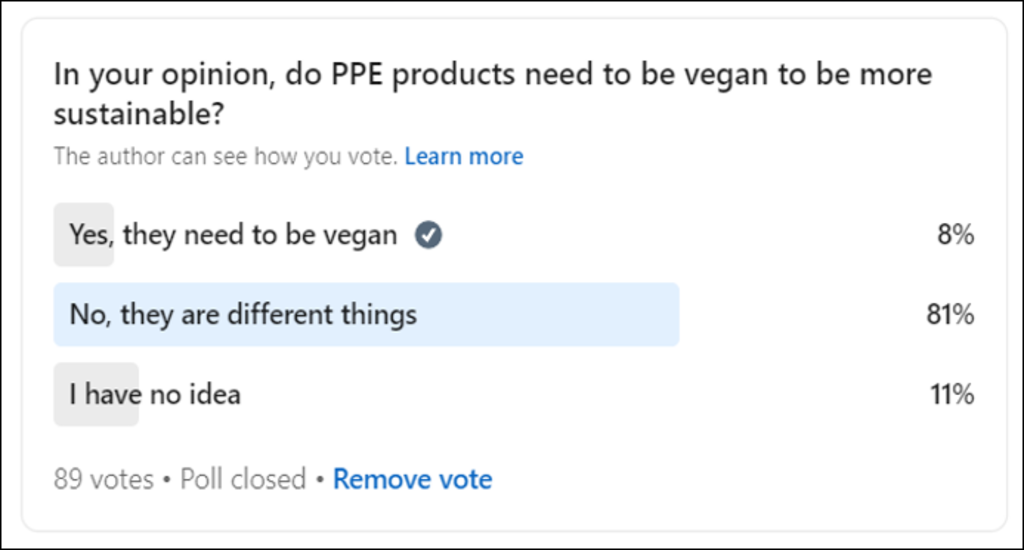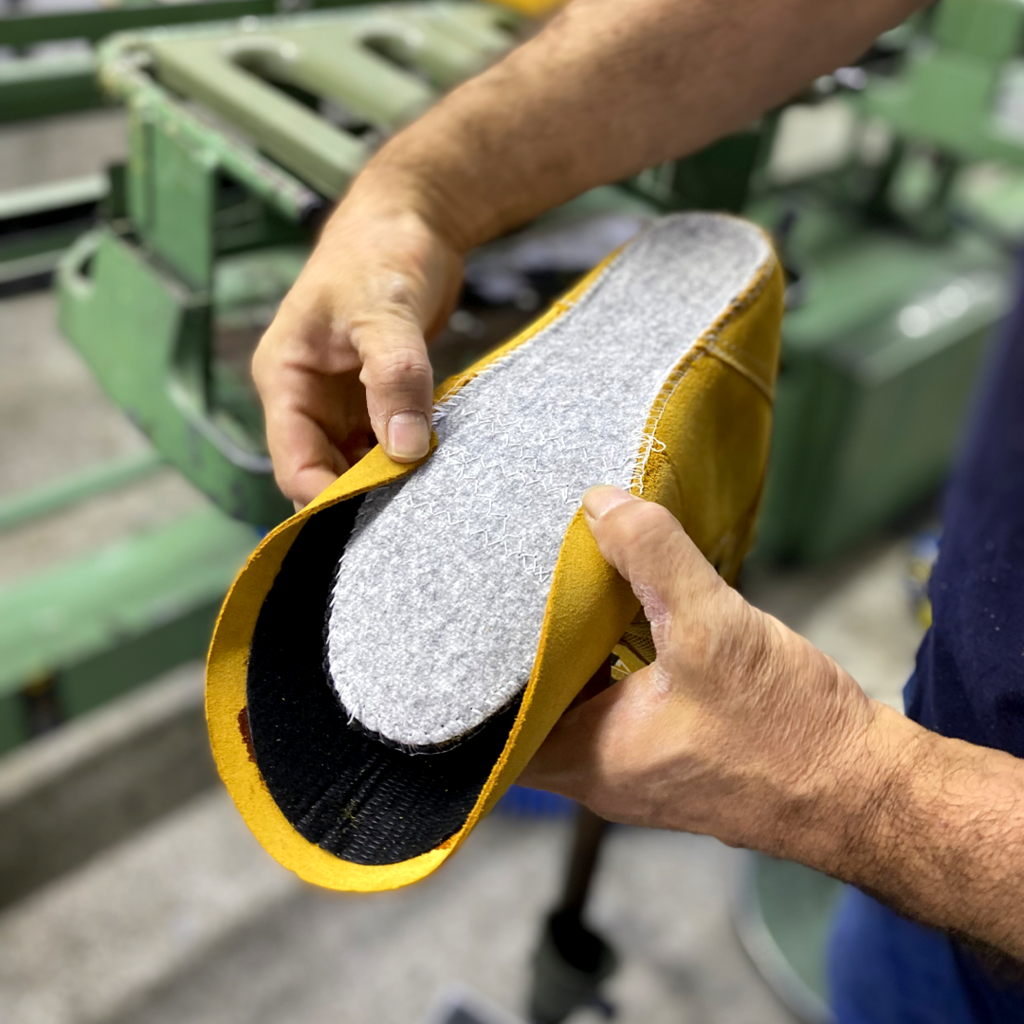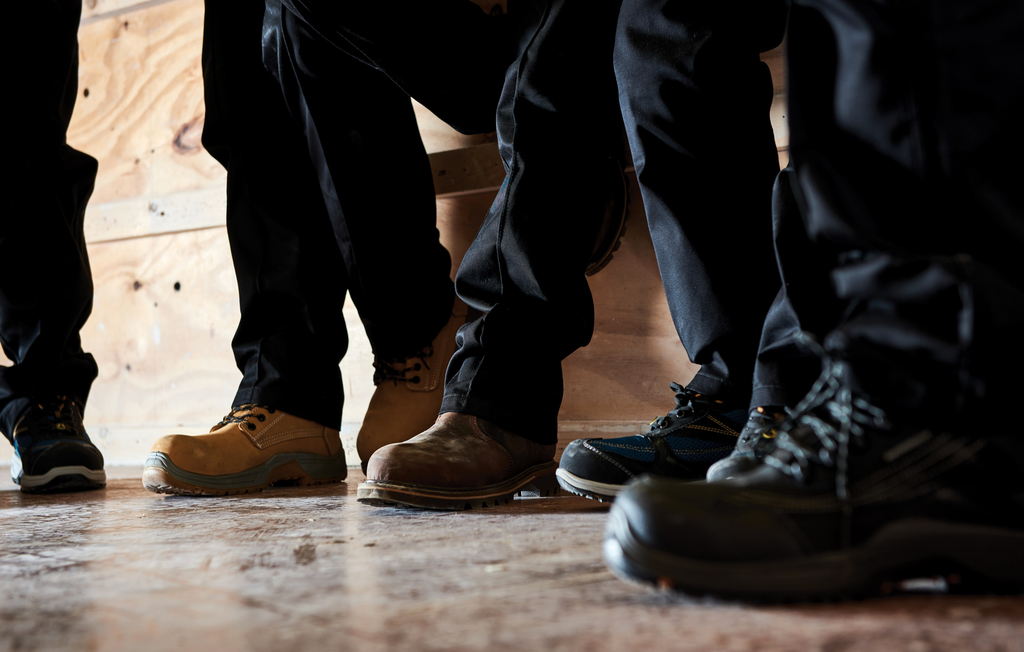
Kelly Rose
Editor

Kelly Rose
Editor
Leather vs vegan leather – which has the smaller carbon footprint? Maeve Taylor finds out.
IS A vegan-friendly boot always a sustainable boot? If a product is plastic, can it ever be good for the environment? Which safety boot material has the least harmful impact on the environment?
In this piece, we examine all these questions, and in particular focus on the carbon footprints of leather and non-leather materials, as well as shining a light on some of the misconceptions and myths about sustainability and veganism in the apparel industry.
First, let’s take a look at the differences in the definitions.
Leather
Leather is animal skin that’s been tanned and treated. It’s commonly used in the footwear industry because of its durability, breathability and good water-resistance. In safety footwear, the most common animals used for leather are Bovine (cow) and Buffalo. As it’s a natural material, leather is generally considered biodegradable, though it is often treated with a plastic coating during production, so arguably it’s not completely decomposable.
Vegan leather
Vegan leather is any synthetic material used as a substitute for leather, often made of polyurethane (plastic). In clothing, this synthetic material - such as microfibre - is sometimes known as ‘non-leather’ or ‘faux leather.’
So, what’s a vegan-friendly safety boot?
Like any vegan-friendly product, a vegan-friendly safety boot must be made without using any animal material such as wool or leather. A vegan product should also never contain animal material within its smaller components or packaging.
SUSTAINABILITY AND VEGANISM: MYTH-BUSTING
Because veganism and sustainability are both practices aiming to have a restorative or positive impact on the planet, they’re often confused as the same or similar things. You might often hear or read statements such as ‘products have to be vegan to be called sustainable’ or ‘if a product isn’t vegan, it’s not sustainable.’
Recently, we conducted a LinkedIn poll asking people if they thought PPE products needed to be vegan in order to be called sustainable. The results were interesting...

The poll shows that almost 20% of respondents said that they either didn’t know or thought that sustainable footwear has to be vegan.
But ‘vegan’ and ‘sustainable’ are very different concepts, and so are responsible for very different impacts and carbon footprints on our planet. Let’s clarify these two terms to help us begin to understand the differences.
Veganism
The practice of avoiding the use or consumption of any product that has used animals or animal-derived materials in production.
Sustainability
A societal aim for the Earth’s population to exist without permanently depleting its natural resources and causing harmful and unlivable climate change.
VEGAN FOOTWEAR ASSUMPTIONS
Often, the assumption is that vegan products made of material like microfibre are environmentally friendly, but as footwear brand OluKai state on their vegan blog:
‘It's important to remember that animal-free shoes are not always more environmentally friendly by default.’
Online product magazine Gear Patrol support this by making the point that:
‘If lessening animal cruelty is the primary motivation behind your veganism, these shoes achieve that goal. But if general sustainability is the aim ... the situation is messier. Technically, the cheap plastic and foam flip flops that wash up on beaches around the world are vegan.’
And there’s no doubt that it does wash up on the beach. In Bazaar Magazine’s ‘Is Vegan leather worse for the environment than real leather?’ blog, it tells us that ‘13 million tonnes of synthetic fibers enter our oceans each year.’
Yet others argue that even with the aforementioned effects of plastic pollution, veganism is still better for the environment. Researchers from University of Oxford have calculated that global emissions would ‘decrease by 55 percent if everyone became vegan.’
LEATHER FOOTWEAR ASSUMPTIONS
While there are clearly biodegradable problems posed by vegan-friendly plastic, we mustn’t forget that the leather trade is responsible for significant pollution and energy use too. Bazaar Magazine’s ‘Is Vegan leather worse for the environment than real leather?’ reminds us:
‘The impact of real leather is driven by land use and GHG emissions associated with animal agriculture... As a result, this plays a major role in climate change, the management of water and biodiversity.’
It’s also worth considering that when leather is treated, the tanning process also generates heavy energy use and introduces potentially harmful chemicals.
TWO SIDES TO THE STORY
So, leather and vegan leather both undeniably leave an environmental footprint. But this ‘which is better?’ argument occurs in many other sectors across the world - the fruit and vegetable industry being a notable example. Many feel for instance that meat production is highly unsustainable due to its water use and high-pollution levels, so have opted for a vegetarian diet. But if the increased volume of fruit and vegetables they consume are imported from abroad, then this debatably isn’t more sustainable, as air-freighted produce generates huge levels of GHG emissions.
Furthermore, fruit is prone to spoiling. UN statistics tell us that alarmingly ‘nearly 1/2 of all fruit & vegetables produced globally are wasted each year.’ And it’s easy to forget that wasted products means the energy generated to create them was wasted as well.
THE START AND END OF A PRODUCT’S LIFE
So there are two sides to this sustainability story. Or more specifically, two ends: the start and the conclusion of a product’s life. And finding out as much as possible about these two factors is crucial in constructing an informed opinion about your own consumer carbon footprint.
The leather trade (a by-product of the meat trade it should be noted) uses large natural resources such as water as well as energy through transport, but as leather is organic and biodegradable, its end-of-life landfill impact is comparatively minimal.
Conversely, with vegan leather - which is predominantly plastic - the reverse is true. Its production processes are arguably much kinder to the environment and undoubtedly the animal population, but its negative environmental impact comes at the end of its life, as its plastic construction means it stays on landfill for several hundred years without biodegrading.
Therefore, while vegan footwear is unquestionably animal-friendly, it doesn’t necessarily mean it’s earth-friendly. Similarly, some feel while leather products have a less harmful impact at the end of its life, it’s responsible for a considerable amount of pollution, waste and energy use when it’s created.
THE FUTURE OF SUSTAINABLE FOOTWEAR
People will always need shoes, and while it’s true that a lot of vegan footwear is not biodegradable, sustainable innovation is progressing all the time. Brands worldwide are making exciting and pioneering inroads into how to use naturally biodegradable yet durable materials such as corn, algae, mushroom and pineapple which could potentially be used to make hard-wearing, long-lasting footwear uppers.
In the safety footwear world where pierce-resistance and impact protection are crucial, it might be a while longer until a reliable, low carbon non-leather safety boot upper is available, but if there’s one positive thing that always emerges in a crisis, it’s innovation - so, who knows? Perhaps in a few years, we’ll be talking about much smaller carbon footprints for safety boots made of leather or microfibre.
So as a consumer, it’s not really a case of whether or not you make an environmental impact - it’s about knowing the type of impact you make and making your own fully informed decision.
Maeve Taylor is marketing manager at V12. For more information, please visit www.v12footwear.com
Here is a link to V12's similar blog on this topic: https://blog.v12footwear.com/leather-vs-microfibre-which-is-better-for-the-environment



Greenways Busienss Park
Chippenham
SN15 1BN
UNITED KINGDOM
01249651900